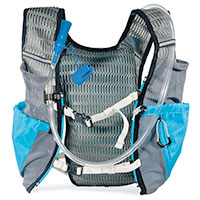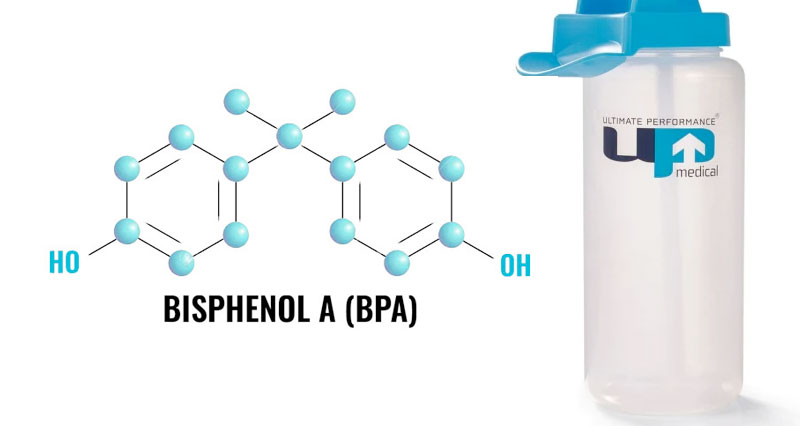Water is vital for life and ensuring adequate hydration is important for both physical and mental well-being and performance. Hydration has many important functions for health, including the regulation of body temperature and blood pressure, cleaning the body and removing it of stored toxins, supporting immune function, aiding digestion and ensuring transportation of oxygen and nutrients around the body.
From a body composition perspective, water is important in the metabolism of fats, as fats are only utilised in the muscle cells and for muscle cells to work they require water. Water is also important for many reactions within the cells including our metabolism, as well as helping us focus, concentrate and preventing low mood.
Water homeostasis
The human body is largely made up of water, this ranges from approximately 60 % of an adult to up to 75 % in babies. Hydration in the body is carefully controlled as allowing too much or too little water into the cells can have significant consequences. Homeostasis is a mechanism employed by the body to maintain a relatively stable equilibrium.
The body controls its water level through the ‘Renin angiotensin aldosterone system’. A reduction in hydration results in a decrease in blood volume and pressure, which results in cells becoming more concentrated and the kidneys not functioning effectively (decreased filtration). This results in the hormone, angiotensin II being released, causing vasoconstriction, therefore increasing blood pressure and sodium uptake, along with increasing aldosterone hormone release, causing a rise in the uptake of water in the kidneys. If we drink too much and become hypohydrated (overhydrated), our kidneys increase filtration rates to deal with the increased blood pressure, subsequently, aldosterone levels decrease, resulting in more water being extracted from the blood and deposited through urination. This is a carefully monitored system.
Water loss and dehydration
Throughout the day, we lose approximately 700 ml of water during expiration when breathing, 1.5 litres through urination and up to 150-200 ml as sweat whilst exercising. These figures will increase further if exercising intensely, particularly during endurance-based exercise or when exercising in warm temperatures. The risk of dehydration can increase for various reasons, such as illness (through vomiting and diarrhea), diseases of the gastrointestinal tract or failure to take on a sufficient volume of fluid to replace that which is lost. As little as a 1.5 % loss in hydration is classed as dehydration, which is referred to as an ‘excessive loss of water from the body’.
How to ensure we are hydrated
To ensure you remain hydrated you can calculate your fluid requirements using the following equation, divide your body weight in kg by 0.024. For example, a 60 kg individual, 60 divided by 0.024 = 2,500 l. When exercising, fluid demands would increase and the characteristics of the individual must be considered, such as how much they sweat or how heavy they breathe. Other advice would be to start the day with a drink, as you would have gone several hours without fluid during sleep whilst losing fluid during the night through sweat and expiration. Aim to drink 2-400 ml per hour during a typical working day.
Hydration in performance
The fluid lost during exercise increases due to a rise in sweating, respiration and muscle contraction. Respiration increases during exercise to meet the oxygen demand of the working muscles, resulting in a rise in water vapour loss through breathing, whilst sweat is lost in order to maintain body temperature. Water is also used in the contractions of muscle tissues, stored glycogen is used by the muscle cells for contraction. As glycogen is stored alongside water, when it is used for muscle contraction, water loss occurs.
It is therefore important that this fluid loss is replaced. During exercise, approximately 750-1500 ml water should be taken on per hour, depending on the individual and the conditions. Research has demonstrated the detrimental effect that dehydration has on performance, particularly in endurance and multi-rep training athletes. Both physical and mental performance has been shown to deteriorate in states of dehydration. The following are common symptoms:
- Higher heart rate
- Impaired aerobic capacity
- Reduced concentration and decision making
- Slower reaction times
- Impaired judgement
- Early fatigue
Dehydration and cardiovascular drift
Cardiovascular drift refers to an increase in heart rate during prolonged endurance-based exercise, despite working at a constant intensity. An increase in heart rate occurs due to the effects of dehydration. When exercising for long periods of time or in warm temperatures, an increased loss of fluids through sweat, expiration and muscle contraction occurs. This results in a decrease in blood plasma (the fluid part of blood) and a subsequent thickening of blood. The decrease in blood plasma results in a decrease in venous return, the volume of blood returning to the heart, and therefore a decrease in stroke volume, the volume of blood ejected from the left ventricle per beat.

As a result, our cardiac output decreases, the volume of blood ejected from the left ventricle in a minute, which coincides with a decreased oxygen delivery to the working muscles and subsequent reduction in performance. As a result, our heart rate must increase to compensate for the reduction in stroke volume, leading to a phenomenon known as cardiovascular drift. A combination of an increased heart rate and blood viscosity puts greater strain on the heart, resulting in our heart working harder at a given intensity, potentially resulting in early fatigue.
Cardiovascular drift flow chart
Exercise in warm temperatures or for an extended period of time
Increased sweating, breathing, and muscle contraction results in loss of water
Water loss results in decreased blood plasma and thickening of the blood
Decreased blood plasma results in decreased in venous return
Decreased venous return results in decreased stroke volume
Decreased stroke volume results in decreased cardiac output
The heart compensates by increasing heart rate
Dehydration and the redistribution of blood
Vascular shunting is the term used to describe the redistribution of blood. The redistribution of blood is essential to performance during exercise because of the limited volume of blood in the human body, approximately 5 litres. Therefore, we must distribute blood to where it is needed most. Vascular shunting is regulated by the sympathetic nervous system, which controls blood flow through vasodilation (opening of the arterioles, increasing flow of blood into the capillaries) and vasoconstriction (constricting of the arterioles, decreasing the flow of blood into the capillaries).
During exercise, vasodilation of the arterioles supplying the working muscles, skin, and heart occurs, increasing the supply of oxygen and nutrients. This is important as the muscles require oxygen and nutrients for muscle contraction, whilst the skin requires blood flow to cool down through sweating. At the same time, vasoconstriction will occur at the non-essential organs, due to the limited supply of blood in the body. However, if dehydration occurs during exercise, we see a reduction in blood plasma, resulting in the thickening of blood and a decreased distribution of blood to the skin. A lack of blood at the skin decreases the sweating response, which in turn causes an increase in body temperature which if not lowered, in extreme cases can lead to heatstroke.
The best way to prevent dehydration is by regularly taking on fluid throughout your training or competition. The most important lesson is not to wait until you feel thirsty before you have a drink. This is for two reasons. Firstly, while exercising, the feeling of thirst is often masked. Secondly, feeling thirsty is an indicator that you are already dehydrated. During exercise aim for 750-1500 ml of water per hour, depending on the weight of the individual, intensity of exercise and the conditions.
With sports and exercise, there are a number of specialist sports drinks available which claim to be more effective at maintaining hydration and improving performance than plain water alone. The reason for these claims is due to the loss of electrolytes (mainly sodium, or salt) in our sweat. These electrolytes are vital for many physiological functions within the human body, including muscle contraction. The presence of electrolytes in sports drinks replaces those lost in sweat and also helps to abolish the risk of developing hyponatremia. Many specialist sports drinks often also contain carbohydrates to provide a source of energy.
Sports drinks often claim to be isotonic. This means that the concentration of the drink is equal to the concentration of the blood. This aids the movement of these electrolytes and carbohydrates into our bloodstream which helps speed up the rate of water absorption. The faster this happens, the faster the effects of dehydration are combated. Plain water is hypotonic, meaning it has a concentration lower than the blood.
The best way of determining if you are consuming enough fluid whilst exercising is to weigh yourself before and after training or competition. Any decrease in weight is due to fluid loss and means you should be drinking more. For every 1lb lost, you should be consuming an additional half a litre of fluid (20 fl oz).
Another method for determining your level of dehydration is by monitoring the colour and strength of your urine. A dark yellow, strong-smelling urine suggests dehydration.
Quiz questions
Identify three reasons for an increased water loss during exercise
- Decreased breathing, increased sweating, and muscle contraction
- Increased breathing, sweating and muscle contraction
- Decreased sweating, vasodilation, and vasoconstriction
Approximately how much water is lost through breathing every day?
- 500 ml
- 700 ml
- 1500 ml
- 1700 ml
Which of the following is not a health benefit of remaining hydrated?
- Water is important in the transport of oxygen around the body
- Water is important for metabolism
- What is important to rid the body of toxins
- Water is important in reducing sweating
What term is used to describe a rise in heart rate despite working at a constant intensity?
- Cardiac output
- Cardiovascular drift
- Stroke volume rise
- Vasodilation
What is meant by vasodilation?
- An opening of the arterioles, increasing blood flow
- A constriction of the arterioles, decreasing blood flow
- The redistribution of blood
- The mechanism of maintaining homeostasis
Which hormone is released when dehydrated to cause vasoconstriction and subsequent rise in blood pressure?
- Cortisol
- Angiotensin II
- Adrenaline
- Sympathetic nervous system
Approximately how much fluid per hour exercise should someone consume?
- 100-200 ml
- 750-1500 ml
- 3000 ml
- 50 ml
Exam-style exams
Explain the impacts of dehydration on performance (3 marks)
Explain the term cardiovascular drift and explain why heart rate increases (4 marks)
Identify the main causes of fluid loss (3 marks)






